Superman,
Harry Potter Head Summer Films
By DAVID GERMAIN, AP
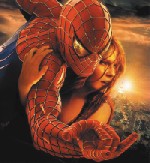 LOS
ANGELES - Hollywood studios hope to laugh all the way to the ticket
counter on the strength of those characters, lead players in the summer
movie season's big three: "Harry Potter and the Prisoner of Azkaban,"
"Spider-Man 2" and "Shrek 2."
LOS
ANGELES - Hollywood studios hope to laugh all the way to the ticket
counter on the strength of those characters, lead players in the summer
movie season's big three: "Harry Potter and the Prisoner of Azkaban,"
"Spider-Man 2" and "Shrek 2."
The computer-animated follow-up to 2001's blockbuster
"Shrek" reunites the voice talents of Mike Myers as the
lovable ogre, Cameron Diaz as his newly "ogrified" bride
and Eddie Murphy as their motor-mouth donkey pal. The sequel debuts
just before Memorial Day.
Arriving a couple of weeks later is the third "Harry
Potter" flick, with Daniel Radcliffe returning as the young sorcerer,
this time sought by a murderous wizard who escapes from a prison for
conjurers.
And for Fourth of July weekend comes "Spider-Man
2," the film that has the best chance of catching "The Passion
of the Christ" as 2004's biggest moneymaker. "Spider-Man"
shattered box-office records with a $114.8 million opening weekend
in 2002 and went to become the year's top movie with $404 million.
 The
sequel pits Spider-Man against villain Doc Ock (Alfred Molina). Complicating
matters, while moonlighting as a superhero, Tobey Maguire's Peter
Parker is coping with life as a frazzled college kid, working two
jobs and pining over girl-next-door Mary Jane Watson (Kirsten Dunst).
The
sequel pits Spider-Man against villain Doc Ock (Alfred Molina). Complicating
matters, while moonlighting as a superhero, Tobey Maguire's Peter
Parker is coping with life as a frazzled college kid, working two
jobs and pining over girl-next-door Mary Jane Watson (Kirsten Dunst).
"He's a relatable superhero. He's a normal kid
or human being who happens to be bitten by a spider," said Maguire
of the gawky teen whose encounter with an irradiated arachnid gives
him awesome powers. "He's a kid who goes through the usual stuff.
Girl problems. His own selfish desires versus a greater responsibility.
Questions we might all ask ourselves if we were in his position."
The summer season gets rolling in early May with "Van
Helsing," the latest from writer-director Stephen Sommers, who
scored hits in the same release date with 1999's "The Mummy"
and its 2001 sequel "The Mummy Returns."
 Sommers
again borrows from the classic Universal horror tales of the 1930s,
this time setting Bram Stoker's vampire hunter Van Helsing (Hugh Jackman)
and a beautiful ally (Kate Beckinsale) against Dracula, the Wolf Man
and Frankenstein's monster.
Sommers
again borrows from the classic Universal horror tales of the 1930s,
this time setting Bram Stoker's vampire hunter Van Helsing (Hugh Jackman)
and a beautiful ally (Kate Beckinsale) against Dracula, the Wolf Man
and Frankenstein's monster.
While sticking to movie-monster iconography (Frankenstein's
creation still has a flat head and bolts in his neck, for example),
Sommers sought to add human dimensions to each creature.
So Dracula's an immortal longing to father a true
heir, Frankenstein's monster is a brutish outcast akin to Lenny from
"Of Mice and Men," and the Wolf Man's "very much like
an alcoholic or drug addict. He could be your best friend or neighbor,
very noble and upright during the day, but at night ...," Sommers
said.
"Anybody could make a movie about Van Helsing
taking on the three monsters and killing them one at a time,"
Sommers said. "But I think we came up with a really fun story
going beyond that and interweaving all the characters."
 "Shrek
2" interweaves some new fairy-tale characters, including Puss-in-Boots
(voiced by Antonio Banderas) and the ogre's disapproving in-laws (Julie
Andrews and John Cleese) parents to Diaz's Princess Fiona.
"Shrek
2" interweaves some new fairy-tale characters, including Puss-in-Boots
(voiced by Antonio Banderas) and the ogre's disapproving in-laws (Julie
Andrews and John Cleese) parents to Diaz's Princess Fiona.
"The parents' expectation is that Fiona would
have met a handsome prince and stayed beautiful and lived happily
ever after, so they are understandably a bit shocked when they meet
Shrek," said Andrew Adamson, a director on both "Shrek"
movies. "It's almost like a Shakespearean farce."
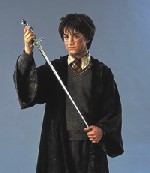 The
third "Harry Potter" reunites key cast members, including
Radcliffe as the title wizard and Rupert Grint and Emma Watson as
his chums at Hogwarts School. Michael Gambon signs on as school patriarch
Dumbledore, inheriting the role from the late Richard Harris, while
Gary Oldman plays the escaped wizard.
The
third "Harry Potter" reunites key cast members, including
Radcliffe as the title wizard and Rupert Grint and Emma Watson as
his chums at Hogwarts School. Michael Gambon signs on as school patriarch
Dumbledore, inheriting the role from the late Richard Harris, while
Gary Oldman plays the escaped wizard.
Alfonso Cuaron took over as director from Chris Columbus,
who oversaw the first two movies and remained a producer on the third.
At two hours and 15 minutes, "Prisoner of Azkaban" is by
far the shortest yet in the series, troubling news to young fans who
want every stitch of action from J.K. Rowling's books translated to
the screen.
With the first two films setting the stage, though,
Cuaron was able to leap right into the action for the third, Columbus
said.
"It's always a double-edged sword. Every kid
who saw the movies wanted them to be longer and almost every adult
wanted them shorter," Columbus said. "But I think this movie
is so good that I don't think you'll get a lot of gripes.”
 Other
action adventures for summer include "Troy," a tale of the
ancient siege starring Brad Pitt as Greek warrior Achilles; the global-disaster
flick "The Day After Tomorrow," with Dennis Quaid ; Halle
Berry's "Catwoman," featuring the DC Comics' character;
an update of "The Manchurian Candidate," starring Denzel
Washington ; "Collateral," with Tom Cruise in the story
of a hit man on a killing spree; Jackie Chan's "Around the World
in 80 Days," a reprise of the Jules Verne classic, featuring
a bit part by Arnold Schwarzenegger ; and "I, Robot," with
Will Smith in an adaptation of Isaac Asimov's tales.
Other
action adventures for summer include "Troy," a tale of the
ancient siege starring Brad Pitt as Greek warrior Achilles; the global-disaster
flick "The Day After Tomorrow," with Dennis Quaid ; Halle
Berry's "Catwoman," featuring the DC Comics' character;
an update of "The Manchurian Candidate," starring Denzel
Washington ; "Collateral," with Tom Cruise in the story
of a hit man on a killing spree; Jackie Chan's "Around the World
in 80 Days," a reprise of the Jules Verne classic, featuring
a bit part by Arnold Schwarzenegger ; and "I, Robot," with
Will Smith in an adaptation of Isaac Asimov's tales.
Smith plays a detective in 2035, when robots have
taken over trash-collecting, working mines and other grunt jobs to
free humanity for higher pursuits. A man who mistrusts technology,
Smith's character is on the trail of a robot he thinks committed a
murder, an impossibility under Asimov's robot rules.
"We
took the basic gist of the stories, that there are three laws of behavior
that prevent robots from injuring human beings or allowing human beings
to be injured," Smith said. "Because my character's had
a bad experience with robots, he doesn't trust the three laws. Something
intuitively in his mind tells him that the three laws don't work."
While "I, Robot" depicts a world moving
toward technological perfection, "The Day After Tomorrow"
presents a planet wracked by global warming, which causes cyclones,
deep freezes, squalls and other catastrophes.
"This is the ultimate disaster movie," said
Quaid, who plays a climatologist trying to save the world. "It's
got everything. Tornadoes, floods, tidal waves, blizzards, hail storms
with hail the size of bowling balls."
 Also
coming this summer: "King Arthur," starring Clive Owen as
the legendary English ruler and Keira Knightley as Guinevere; "The
Village," the latest creepfest from M. Night Shyamalan ("The
Sixth Sense," "Signs"), starring Joaquin Phoenix ,
Sigourney Weaver , Adrien Brody and William Hurt; the monster smackdown
"Alien Vs. Predator," featuring the two extraterrestrial
beasts; "The Chronicles of Riddick," with Vin Diesel back
as the sci-fi anti-hero from "Pitch Black"; "Thunderbirds,"
starring Bill Paxton in a live-action update of the cult TV puppet
series about future rescue pilots; and "The Bourne Supremacy,"
with Matt Damon returning as the amnesiac spy from "The Bourne
Identity."
Also
coming this summer: "King Arthur," starring Clive Owen as
the legendary English ruler and Keira Knightley as Guinevere; "The
Village," the latest creepfest from M. Night Shyamalan ("The
Sixth Sense," "Signs"), starring Joaquin Phoenix ,
Sigourney Weaver , Adrien Brody and William Hurt; the monster smackdown
"Alien Vs. Predator," featuring the two extraterrestrial
beasts; "The Chronicles of Riddick," with Vin Diesel back
as the sci-fi anti-hero from "Pitch Black"; "Thunderbirds,"
starring Bill Paxton in a live-action update of the cult TV puppet
series about future rescue pilots; and "The Bourne Supremacy,"
with Matt Damon returning as the amnesiac spy from "The Bourne
Identity."
Damon's Jason Bourne this time is framed for murder
and on the run, and though his memories remain cloudy, he continues
to find he possesses just the right skills to get out of any scrape.
"One of the hurdles we had on the first one was
just the way I look. I don't look like your classic action guy,"
Damon said. "What we decided is, the more things I could do,
the more believable and credible the character would be and the better
the ride would be for the audience. So we just wanted to put me in
as many situations as possible."
Lighthearted summer films include: "Princess
Diaries 2: Royal Engagement," starring Anne Hathaway and Julie
Andrews in a follow-up to their 2001 summer hit; "The Stepford
Wives," with Nicole Kidman, Matthew Broderick, Bette Midler and
Christopher Walken in a black-comedy remake of the 1970s hit; "Garfield,"
a live-action and computer-animated adaptation of the comic strip,
with Bill Murray providing the fat cat's voice; "Shall We Dance?"
starring Richard Gere, Jennifer Lopez and Susan Sarandon in a remake
of the Japanese film about a businessman who falls in love with formal
dancing; "A Cinderella Story," with Hilary Duff giving a
contemporary spin to the fairy-tale romance; and "Anchorman:
The Legend of Ron Burgundy," featuring Will Ferrell as a '70s
newsman facing off against a feminist colleague (Christina Applegate).
Still, summer is not all action and laughs.
A few classy films will be mixed in among the popcorn
flicks.
Tom Hanks and Steven Spielberg reunite for "The
Terminal," the story of an Eastern European visitor who becomes
a man without a country, stuck in the arrivals area at Kennedy airport
after a coup in his home land leaves him without a valid passport.
Catherine Zeta-Jones co-stars.
Robert
Redford plays a kidnapped tycoon engaged in a socio-economic debate
with his abductor (Willem Dafoe) in "The Clearing," which
co-stars Helen Mirren.
Why
you shouldn't turn off your PC
Brian
Cooley, Cnet
 Off
or on? Where else but CNET would a discussion of whether you should
turn your PC off at night become the hottest thread in the history
of our user forums?
Off
or on? Where else but CNET would a discussion of whether you should
turn your PC off at night become the hottest thread in the history
of our user forums?
My position in
the debate: I say, forget the thing even has a power switch. Leave
it on. That way your machine is instantly available, just like every
other tech product you own. It also lets backup programs, antivirus
apps, and spyware cleaners do their thing thoroughly every night without
slowing you down--or vice versa. That's how the pros run machines
after all.
The cost? The
average PC draws something like 60 watts in normal operation. At the
average national rate of 10 cents per kilowatt-hour (or Tk 2.5 per
kilowatt-hour in Bangladesh), that's $6 a month (Tk 150 a month) running
all the time. Add in a monitor, and you might round up to $10, much
less for an LCD. So we're talking maybe $120 per year.
What about wear
and tear? The only part of a PC you really worry about breaking is
the hard drive. My Seagate Barracuda is a 600,000-hour part (as measured
by its mean-time-between-failures rating). That's about 69 years,
always on. I've also noticed that PCs are like jetliners--they almost
never crap out when cruising, but you have to watch those takeoffs
and landings. Cycling the power on a PC is when you should tighten
your seat belt.
But if the benefits
of instant-on and background housekeeping don't turn you on, here's
a more human-based reason to never shut down your machine: It takes
my computer 48 seconds to boot. During that time, if you're like me,
you sit there, pretty much staring at the BIOS and Windows screens.
Maybe you're even mouth-breathing. Done just once a day, that's 4.9
hours of looking stupid, every year. I'll gladly play $120 to take
that off my resume.
A cure for cable
clutter
Cables irritate me, cascading on and off your desk, connecting all
your desktop gear in an inefficient, expensive, snarled mess. The
cat always wants to climb them and, as Cooley's Rule predicts, always
ascends the one connected to the most expensive piece of gear, which
means the Nikon film scanner takes a header onto the floor--the hardwood
floor.
Yes, I've been
accused of being tidy, but even the slovenly among you will like this
trick: Install a plastic rain gutter on the wall your computer desk
sits against, just below table height. Then lay all your cables in
it, drilling perhaps one large hole where they need to escape and
find the AC outlet. This will keep most of your cables off the floor
and out of the cat's grasp. I like RainGo's gutter line for this project.
Google not perfect
I have a bone to pick with Google. Go there and search doubletree
club las vegas. You'd expect to get a result up high that links to
that hotel's site. But no. In fact, nowhere on the first page of results
is there a link to any site run by the Doubletree hotel chain--just
a bunch of junky travel reservation aggregators you've never heard
of, emanating from long, hyphenated domains.
You get the same
thing with four seasons las vegas reservations (more my style, anyway).
I expected at least one result on the first page to point to, say,
a Four Seasons hotel page, any Four Seasons hotel page. No.
Cables
irritate me, cascading on and off your desk, connecting all your desktop
gear in an inefficient, expensive, snarled mess.
TOCA RACE DRIVER
2:
The Ultimate Racing
Simulator
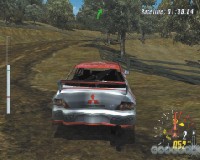 Gamespot
rating: 7.7. Publisher/Developer: Codemasters. Genre: Driving. Release
Date: April 15. Difficulty: Variable. Learning Curve: From 0 to 15
Gamespot
rating: 7.7. Publisher/Developer: Codemasters. Genre: Driving. Release
Date: April 15. Difficulty: Variable. Learning Curve: From 0 to 15
Minutes. Stability: Stable. Requirements: 256 MB RAM, 2X CD-ROM, 32
MB VRAM, 1.17 GB disk space
TOCA Race Driver
2: The Ultimate Racing Simulator, Codemasters' follow-up to its unique
2002 racer, is not quite the ultimate racing simulator that it claims
to be, but it's absolutely a game worth playing for any serious racing
fan. It provides an excellent variety of race types, backed up with
some solid driving mechanics and a deep and engaging career mode.
Unfortunately, the PC version also suffers from a few graphical polish
issues as well as some extremely irritating sound bugs, which ultimately
mar the game's otherwise solid performance.
TOCA Race Driver
2 is all about variety. Rarely has there been a game that brings as
many types of races to the table as this one does. You can choose
from a bevy of different race types and concordant cars, including
stock cars, rallies, Super Trucks, street racing, Mustangs, Land Rovers,
open-wheel racers, and so on. There are 15 different varieties of
races in all, each of which is actually represented quite well, both
visually and in gameplay. TOCA Race Driver 2 also features a huge
roster of more than 50 different worldwide racetracks, ranging from
the Texas Motor Speedway to Pikes Peak to Brands Hatch, and more.
Every track is extremely well constructed, and serious race fans should
find each track immediately recognizable.
 The
racing mechanics in TOCA Race Driver 2 are primarily geared toward
the more realistic ilk of racers. Each type of car handles uniquely
and quite accurately. Slideouts usually happen when they should, and
wrecking your car adversely affects your ability to race in several
different ways. Blowing a tire will obviously kill your ability to
steer properly, and thrashing your gearbox affects your acceleration
and speed quite a bit. Controlling slideouts seems much easier to
control, and concordantly, braking and using your emergency brake
to slide around corners seems almost a bit too effective for some
reason. The game also features a driving mode that is even more simulation-based
than the normal mode, and it is also significantly harder. This mode
is especially geared toward players with driving wheel controllers,
and for that expressed purpose, it works great, adding more challenge
than you would get otherwise.
The
racing mechanics in TOCA Race Driver 2 are primarily geared toward
the more realistic ilk of racers. Each type of car handles uniquely
and quite accurately. Slideouts usually happen when they should, and
wrecking your car adversely affects your ability to race in several
different ways. Blowing a tire will obviously kill your ability to
steer properly, and thrashing your gearbox affects your acceleration
and speed quite a bit. Controlling slideouts seems much easier to
control, and concordantly, braking and using your emergency brake
to slide around corners seems almost a bit too effective for some
reason. The game also features a driving mode that is even more simulation-based
than the normal mode, and it is also significantly harder. This mode
is especially geared toward players with driving wheel controllers,
and for that expressed purpose, it works great, adding more challenge
than you would get otherwise.
The
only serious complaint about TOCA 2's gameplay stems from the game's
physics model, which is a little unreliable in certain situations.
Though wrecking into other cars is generally not advised, it's too
easy to simply use other cars as padding when sliding around corners.
Bumping into the side of an opposing car at the right angle simply
prevents you from sliding out, and it usually lets you gain a number
of spots in a race pretty cheaply. Furthermore, crashes don't always
seem to look or feel as they ought to. This is mainly an issue with
bigger crashes, specifically in situations where you should be rolling
your car or otherwise sustaining or inflicting a huge amount of damage--and
sometimes it doesn't actually happen that way. These physics issues
aren't a huge problem by any means, but they're definitely an annoyance.
For the most part, the game's racing artificial intelligence is quite
well done, and drivers are usually smart enough to avoid wrecks whenever
possible. Occasionally you'll encounter a random dolt driver who makes
a boneheaded mistake on the track.
New
device allows recording at concerts
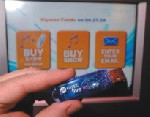 AP,
NEW YORK - Oh, how far we've come from the 78, the 45, even the CD.
Now, minutes after your favorite band sounds its last note on stage,
you can load a live recording of the concert onto a cigarette-lighter-sized
hard drive hanging off your keychain.
AP,
NEW YORK - Oh, how far we've come from the 78, the 45, even the CD.
Now, minutes after your favorite band sounds its last note on stage,
you can load a live recording of the concert onto a cigarette-lighter-sized
hard drive hanging off your keychain.
Take it home,
toss the digital files onto your computer and then e-mail it to all
your friends with the message, "Dude! These guys are awesome!"
On May 21, new
digital kiosks offering the tiny drives will be installed at Maxwell's,
a small indie-rock club in Hoboken, N.J. At $10 a pop for the recording,
and $20 for the reusable, keychain drive, let the downloading begin.
"This is
a tool that allows fans to take home and share some of the best independent
music from small live venues around the country," said Daniel
Stein, CEO of Dimensional Associates, a private equity firm that owns
eMusic Live, which created the machines.
For Scott Ambrose
Reilly, president of eMusic Live, the idea is to let fans have a legal
copy of a live show, which gives smaller artists creative control
over the quality of the recording .
Fans
can share the files with their friends, providing free word-of-mouth
publicity for smaller bands.
A
different perspective of the moon
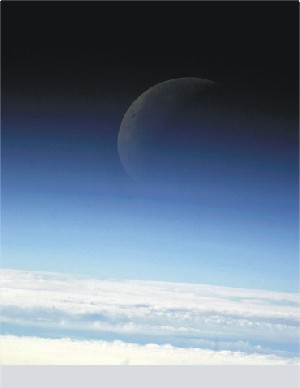
This
NASA image shows a crescent moon through the upper layers of Earth's
atmosphere photographed by crew members on board the International
Space Station from a vantage point about 360 km over the Earth. At
the bottom of the image, a closed deck of clouds is probably at about
6 km. The scatter of light causes the shades of blue grading to black
as it strikes gas molecules of the very low-density upper atmosphere.
According to a study by the Naval Research Laboratory, the density
of the thermosphere has decreased about 10 percent over the last 35
years. These findings are important both for space science and for
Earth science. Spacecraft in orbit, such as the International Space
Station, experience less drag and need fewer boosts to maintain their
orbit. At the same time, space debris also remains in orbit longer,
which increases hazards to spacecraft. Most importantly, the study
validates models of the greenhouse effect of increased carbon dioxide
release on the dynamics of the atmosphere.
Molecular
rings could shelter Venus Bugs
Hazel
Muir, New Scientist
The idea that
microbes may be alive and well in Venus's clouds is controversial.
But some scientists are becoming more convinced that microorganisms
could survive, thanks to the shelter from ultraviolet radiation provided
by molecular rings of sulphur.
Venus might once
have been warm and wet, and a potential breeding ground for life,
but at some point a runaway greenhouse effect dried the planet out
and heated its surface to more than 480 °C.
A few scientists
have argued that if Venus's climate change was slow enough for life
to adapt, microbes could survive there today, living in acidic clouds
at altitudes of about 50 kilometres. The temperature there is only
about 50 to 70 °C - conditions some terrestrial microbes can endure.
Dirk Schulze-Makuch
of the University of Texas at El Paso and his colleagues have argued
that the chemistry of the atmosphere is hard to explain unless microbes
are influencing its composition (New Scientist print edition, 28 September
2002).
But unlike Earth,
Venus does not have a protective shield of ozone. How could bugs survive
the intense UV light from the Sun, which should by rights fatally
damage proteins and DNA? Now Schulze-Makuch and his team say they
have found a solution.
Patterns of absorption
in the UV spectra of the planet suggest that the atmosphere may contain
lots of "cycloocta-sulphur", rings of eight sulphur atoms.
These have double
bonds that readily absorb UV light, then re-radiate the energy at
relatively harmless visible wavelengths. Schulze-Makuch says this
could mean that the atmosphere provides a sunscreen for any Venusian
bugs.
Critics of the
idea say there is not enough free water on the planet for microbes
to survive. But Schulze-Makuch says Venusian microbes could suck water
from hydrated sulphur compounds in the clouds.
Many
probes visited the planet in the 1960s and 1970s, but there was no
search for life. "At that time, we didn't know about terrestrial
life in extreme environments, in hot springs or deep beneath the crust
of the Earth," says Schulze-Makuch. "Now that we do, it's
time to design missions to look for life in the clouds of Venus.”
